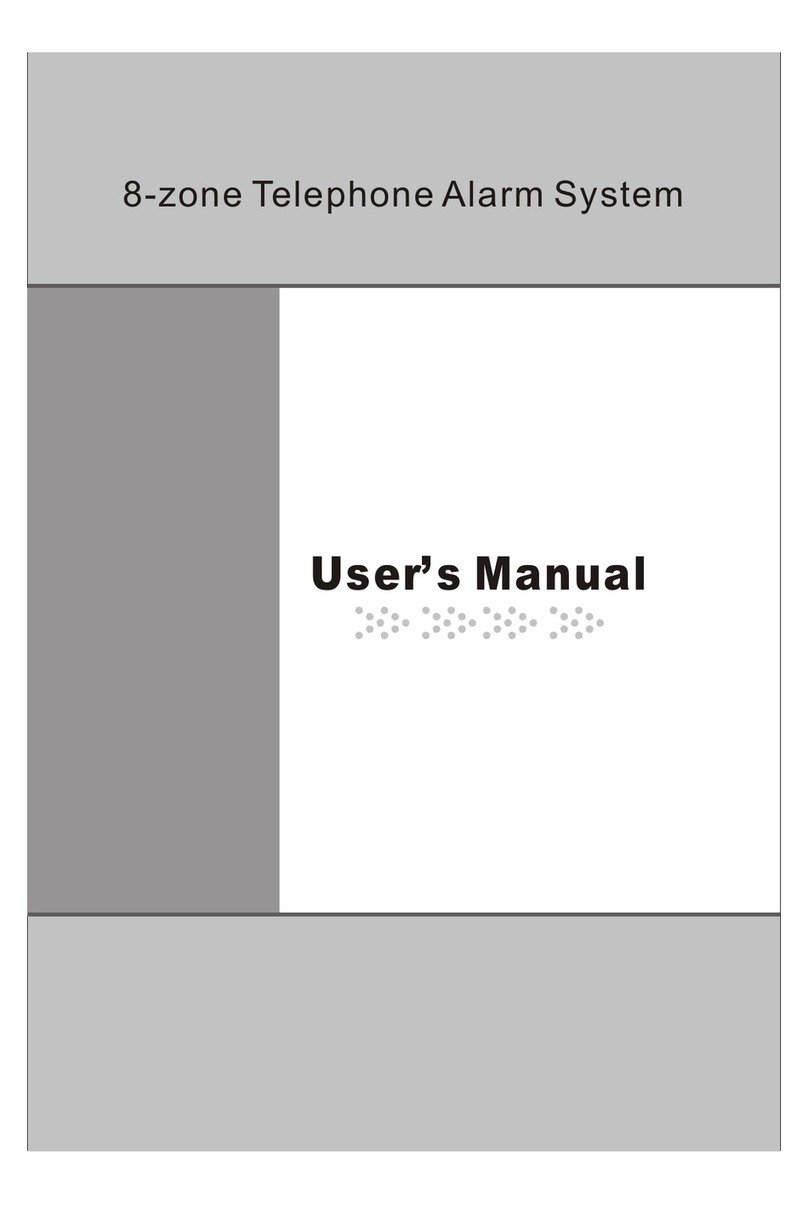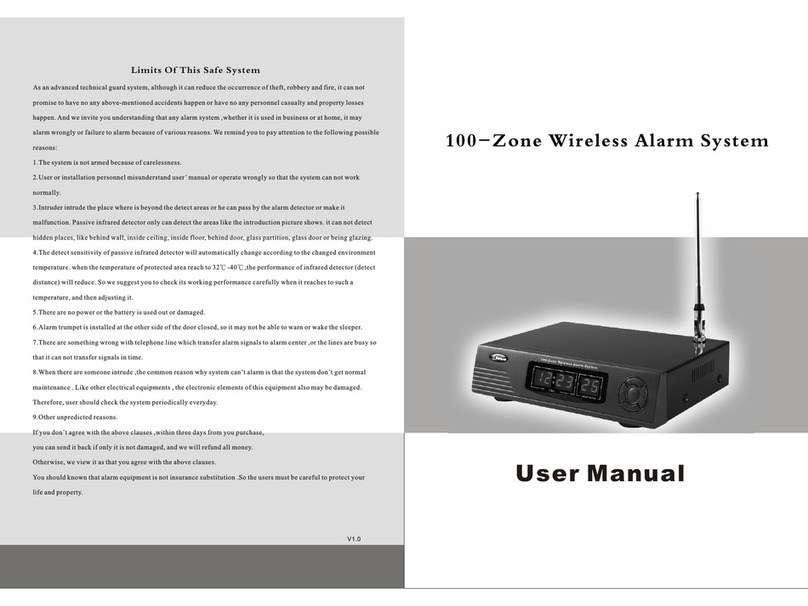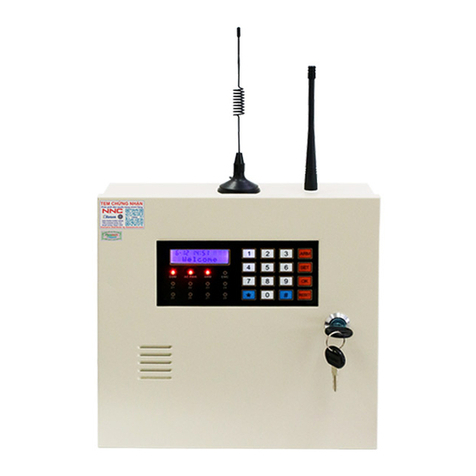Infrared sensitivity selection jumper: If the
jumper is inserted at "H" position, the
effective detection distance is 8 to 12 meters.
If the jumper is inserted at "L" position, the
distance is about 4 to 8 meters.
Backup Power input: the allowable input
power voltage is 12-13.8V.
AC power supply input.
Forced emission control: if the jumper is
connected, the detector will be continuously
sending an alarm signal till the jumper is
disconnected. Usually, it is used to test whether the emission circuit
is normal.
Double infrared sensor: keep the surface clear and don't touch the
surface by hand. If the surface is dirty, clear it with a cotton ball
dipped in 90% alcohol.
Alarm indicator: when the indicator is emitting an alarm signal,
the alarm indicator will be on.
Usually, to protect the radio emission circuit, the alarm emission
time period is controlled within 5 seconds and the alarm interval is
about 10 seconds. Within the alarm deactivation period, the infrared
detector won't respond to an alarm signal.
3. KS-200ACT series infrared detector
After KS-200ACT wireless infrared detector is power on, it will be
automatically blocked for 20 seconds and won't receive infrared
signals. After 20 seconds, it will automatically enter into defense
state.
Forced emission control: connect this jumper and the detector
will emit alarm signals for 3 seconds.
Infrared detection distance control: the detector has three levels
of sensitivity controls. Connect the short jumper closer to "L"
position, the sensitivity will be lower and the detection distance will
be shorter. It is recommended to select a lower sensitivity, when the
usage requirement is satisfied.
1
2
3
4
5
6
1
2
+
/






























